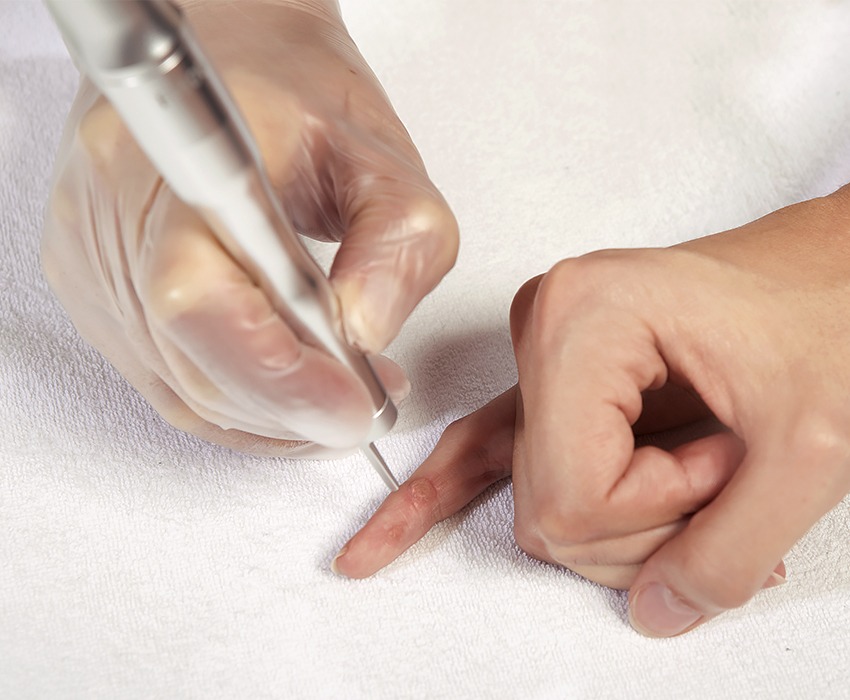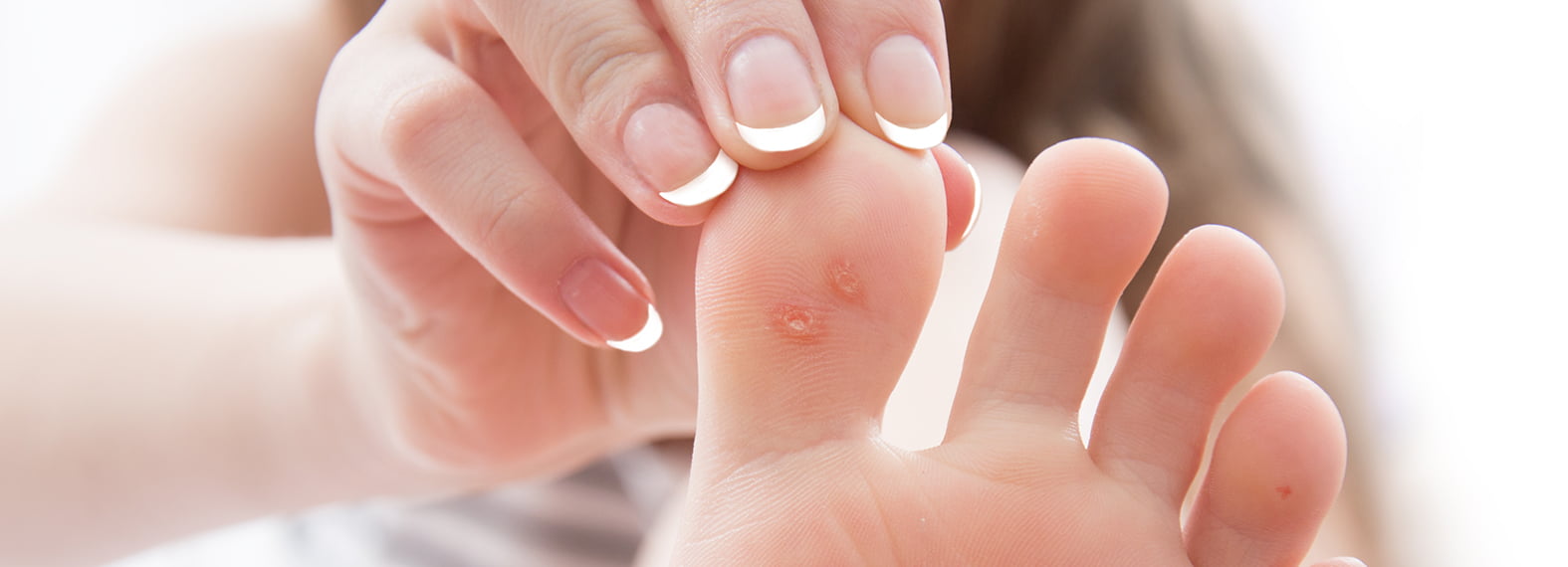Warts are harmless growths on the surface of the skin. They typically occur on the hands, feet, face or genital area. Warts usually do not cause any discomfort. Condylomas (genital warts) sometimes itch. There are different types of warts - the most common form is the so-called vulgar wart. This is often found on the fingers, face and fingernails.
Vulgar warts can be as big as a pea, and the surface is usually dry and fissured. Plane warts often occur in children and adolescents. These are flat and rarely larger than a few millimetres. These warts also mostly affect the hands and face.
The best-known wart in the area of the feet is the plantar wart. This wart, which usually appears under the soles of the feet, grows deep into the skin like a thorn. This can lead to considerable pain when standing and walking. Plantar warts are caused by viruses.
Another virus-induced wart is the dell wart. It occurs mainly on the face, arms and legs. People and especially children who suffer from neurodermatitis or very dry and sensitive skin are more often affected by dell warts.
Stalk warts (fibromas) and age warts are called such, but strictly speaking they are not real warts. Stalk warts are small connective tissue growths (always benign) and age warts are dry and horny, often scaly and usually brown pigmented skin changes. Age warts (verrucae seborrhoicae) increase with age. These are harmless skin changes. The diagnosis of whether it is really an age wart or a stalk wart must always be made by an experienced dermatologist.
Treatment varies depending on the cause of the wart. In the case of skin changes such as fibromas (stalk warts) and age warts, treatment with the ablative laser has proven successful. At the Swiss Derma Clinic in Zurich, we carry out this treatment with the latest laser systems. Your advantages:
Removal of the wart-like skin change within seconds with minimal scarring (depending on the wart depth).
In addition, we perform the HPV vaccination as a prophylaxis against virus-induced warts such as condylomas.

